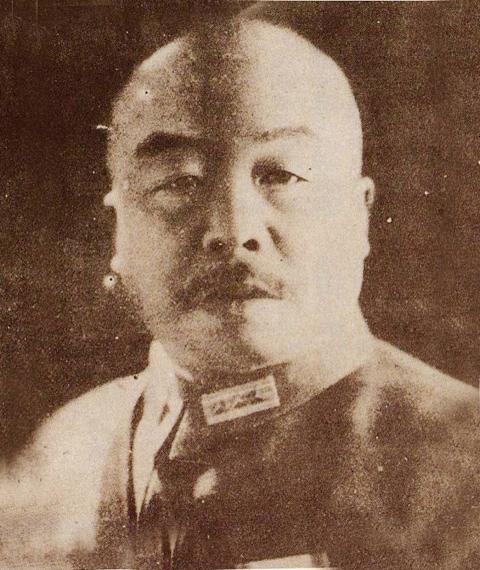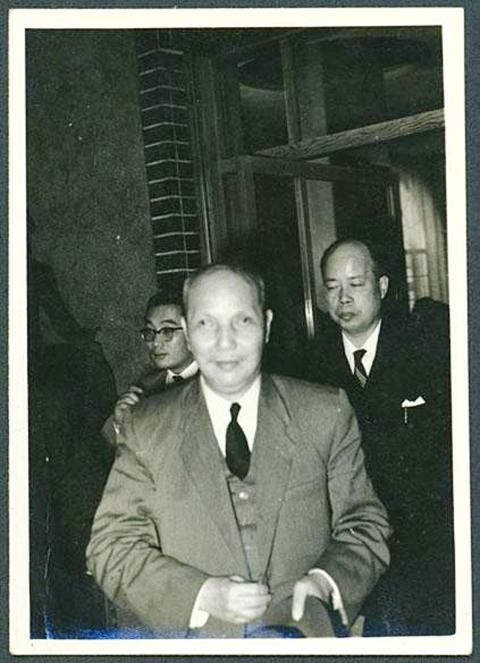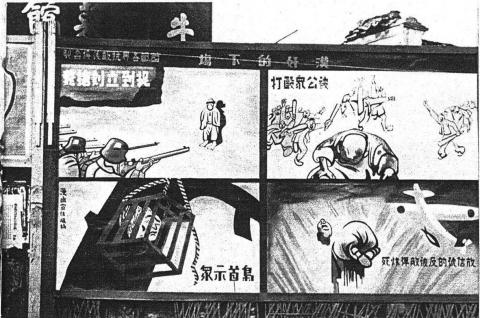Jan. 14 to Jan. 20
After World War II, the Chinese Nationalist Party (KMT) started hunting down hanjian (漢奸, traitors to Han Chinese). But a tricky situation arose when 96 out of 195 suspected hanjian tried in Xiamen were actually Taiwanese.
According to the Hanjian Punishment Act (懲治漢奸條例) then in force, a hanjian was “a Chinese who directly or indirectly collaborates with the enemy, using various methods to hinder our military, sabotage our strategy, leak our secrets and harm our compatriots.”

Photo courtesy of Wikimedia Commons
A July 1947 government report showed that 26,970 people had been charged as hanjian, with 342 executed and 847 sentenced to life in prison. However, the authorities weren’t quite sure what to do with those Taiwanese who had been Japanese citizens up until 1945. The KMT saw them as a “deeply poisoned populace” brainwashed by the Japanese, and many had indeed worked closely with the colonial government or taken part in the Japanese war effort in China.
Quite a few Taiwanese were working in Japanese-occupied areas of China such as Xiamen. Historian Chen Tsui-lien (陳翠蓮) writes in Historical Rectification in Postwar Taiwan (台灣戰後初期的歷史清算) that while the bulk of them were civilians making an honest living, there were also those who turned to shady activities and were in cahoots with Japanese secret agents.
Even though the Judicial Yuan in January 1946 clarified that Taiwanese could not be tried as hanjian, they were still included in anti-hanjian purges across China. And in Taiwan, the governor-general Chen Yi (陳儀) also ignored the interpretation and asked people to report suspects between Jan. 16 and Jan. 29, 1946, collecting 335 names and arresting 41 over the next few months.

Photo courtesy of Taiwan Digital Archives
The Taiwan Minpao (台灣民報) newspaper protested, writing: “As Japanese citizens, Taiwanese bore the same responsibilities as Japanese, including fighting alongside them in the Japanese Army. According to the government’s definition, then, all Taiwanese can be seen as hanjian. Every single person who lived in Taiwan before Japanese surrender has helped the enemy in some way.”
WHO’S A ‘HANJIAN’?
After World War II, there was much Chinese resentment toward Taiwanese living in China. In September 1945, Guangzhou’s governor ran an article in the local newspaper in response to attacks on the 8,000-strong Taiwanese community.

Photo courtesy of Wikimedia Commons
“The Taiwanese have been deeply poisoned by the Japanese in the past, but they have realized their mistakes. We should act generously and help re-educate them so they can rediscover their conscience,” the article read.
Incidentally, the first war criminal executed in Guangzhou on Nov. 25, 1945, was Hsinchu native Chen Chin-tien (陳錦添), a minor officer charged with murder and selling opium on behalf of the Japanese government. The press closely followed his case, stressing that he was brainwashed by the colonizers, had “no recognition of the motherland” and even commenting that the execution was very “satisfying to watch.”
Despite the efforts of KMT figures, especially Taiwan-born and China-raised Chiu Nien-tai (丘念台), to protect Taiwanese, 74 were arrested in Guangdong’s anti-hanjian purges between November 1945 and May 1946.
However, even the Bureau of Investigation and Statistics wasn’t sure whether Taiwanese could be considered hanjian.
“We have found that hanjian should be limited to citizens of [the Republic of China]. Taiwan has fallen to Japan for 50 years, and it was the Qing Empire who ceded it. Therefore, Taiwanese were not citizens of our country until we reclaimed Taiwan. Those Taiwanese who participated in the killing, looting and burning alongside the Japanese troops should be tried under the appropriate war crimes, and it seems that those who were forced to join the Japanese Army or worked for the Japanese occupiers across China should not qualify as hanjian.”
The Bureau asked the Judicial Yuan for an interpretation. The Judicial Yuan concurred, confirming that as Japanese citizens during the war, Taiwanese should fall under international law instead of the hanjian provisions.
However, the regional courts continued to challenge the interpretation. In July 1946, the Shanghai High Court quoted KMT leader Chiang Kai-shek’s (蔣介石) orders in its argument:
“During the struggle against the Japanese, any Taiwanese who commit illegal acts and collude with the enemy to harm our people should be treated as hanjian without leniency.”
Before the purges in Taiwan, the KMT’s anti-hanjian laws were printed in the local newspapers with a note that these rules fully applied to Taiwanese.
The state-run Taiwan Hsin-sheng Pao (台灣新生報) newspaper originally maintained that Taiwanese could not be considered hanjian, but after the Taiwan Garrison Command announced the purges, it quickly changed its rhetoric, stating that there “are many shameless people who worked for the enemy to oppress the Taiwanese… they should not be shown leniency.”
Due to the broad definition of hanjian, there was some unrest as people weren’t sure who to report. The newspaper tried to clarify in an editorial, noting that although it’s hard to define a Taiwanese as hanjian, the “following three types of hanjian are indisputable: those who seek independence, those who oppose the government and try to cause social unrest and those who collude with Japanese after the war to loot national property.”
“As an official publication, the Taiwan Hsin-sheng Pao made several corrections and changed its stance on hanjian policy. This shows that even the government was unsure of how they felt toward Taiwanese hanjian,” Chen Tsui-lien writes.
CHEN YI’S WITCH HUNT
Forty-one people were arrested on governor-general Chen Yi’s orders, including prominent figures such as Ku Chen-fu (辜振甫), Lin Hsiung-hsiang (林熊祥) and Hsu Ping (許丙), who were accused of plotting independence. Lin Hsien-tang (林獻堂) avoided this fate through his connections.
Critics found it hypocritical that the KMT decided not to seek war reparations from Japan but punished the Taiwanese instead.
However, the witch hunt did not stop. In August 1946, Chen Yi denied public rights to those who held important positions in the Komin Hokokai political organization and those reported as being hanjian — continuing to ignore the Judicial Yuan’s interpretation. This law was widely criticized as it took effect before the person was proven guilty.
In a period of national mobilization for the war effort, numerous Taiwanese were essentially compelled to join the Komin Hokokai, which contained numerous umbrella organizations that included youth groups as well as medical and artist brigades.
Despite repeated warnings from the central government, Chen Yi refused to stop, carrying on until the outbreak of the anti-government uprising and crackdown now known as the 228 Incident.
“Chen’s government was convinced that Taiwanese were unhappy with the KMT due to the ‘slave mentality’ instilled by the Japanese and their lack of identification toward the motherland. Therefore he insisted on continuing the purges to weed out any potential dissidents,” Chen Tsui-lian writes.
Taiwan in Time, a column about Taiwan’s history that is published every Sunday, spotlights important or interesting events around the nation that have anniversaries this week.

Three big changes have transformed the landscape of Taiwan’s local patronage factions: Increasing Democratic Progressive Party (DPP) involvement, rising new factions and the Chinese Nationalist Party’s (KMT) significantly weakened control. GREEN FACTIONS It is said that “south of the Zhuoshui River (濁水溪), there is no blue-green divide,” meaning that from Yunlin County south there is no difference between KMT and DPP politicians. This is not always true, but there is more than a grain of truth to it. Traditionally, DPP factions are viewed as national entities, with their primary function to secure plum positions in the party and government. This is not unusual

Mongolian influencer Anudari Daarya looks effortlessly glamorous and carefree in her social media posts — but the classically trained pianist’s road to acceptance as a transgender artist has been anything but easy. She is one of a growing number of Mongolian LGBTQ youth challenging stereotypes and fighting for acceptance through media representation in the socially conservative country. LGBTQ Mongolians often hide their identities from their employers and colleagues for fear of discrimination, with a survey by the non-profit LGBT Centre Mongolia showing that only 20 percent of people felt comfortable coming out at work. Daarya, 25, said she has faced discrimination since she

April 21 to April 27 Hsieh Er’s (謝娥) political fortunes were rising fast after she got out of jail and joined the Chinese Nationalist Party (KMT) in December 1945. Not only did she hold key positions in various committees, she was elected the only woman on the Taipei City Council and headed to Nanjing in 1946 as the sole Taiwanese female representative to the National Constituent Assembly. With the support of first lady Soong May-ling (宋美齡), she started the Taipei Women’s Association and Taiwan Provincial Women’s Association, where she

More than 75 years after the publication of Nineteen Eighty-Four, the Orwellian phrase “Big Brother is watching you” has become so familiar to most of the Taiwanese public that even those who haven’t read the novel recognize it. That phrase has now been given a new look by amateur translator Tsiu Ing-sing (周盈成), who recently completed the first full Taiwanese translation of George Orwell’s dystopian classic. Tsiu — who completed the nearly 160,000-word project in his spare time over four years — said his goal was to “prove it possible” that foreign literature could be rendered in Taiwanese. The translation is part of